It wasn't unusual for him to be here in February, since the island was available for year-round use. He was heading for Sugar Island in 1951, when he set out from Gananoque on skis to cross the ice.
Edward Q. McEvoy, or “Eddie,” was born May 31, 1900, in New York City, the only child of Capt. Edward and Ellen (née Quirk). Capt. McEvoy was a Master who operated river and harbour craft. He commanded “Fidelity,” a vessel carrying hospital personnel, patients, supplies, and visitors from Manhattan to Rikers, North Brother, and other islands in New York City waters.
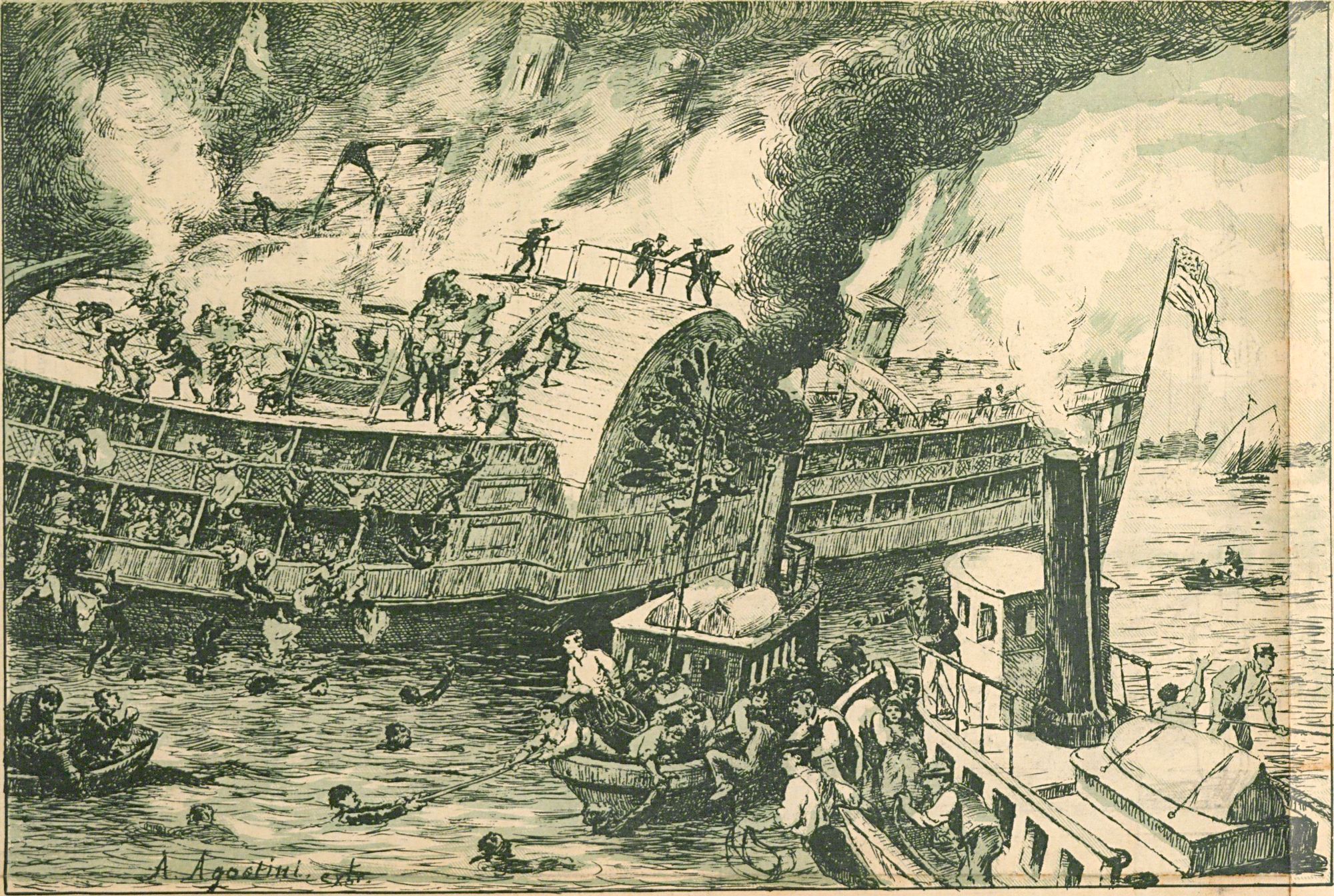
With Capt. McEvoy in command, the Fidelity was one of the first craft to rescue survivors of the General Slocum fire disaster on June 15, 1904. The General Slocum disaster was the New York area's worst disaster in terms of loss of life until the September 11, 2001 attacks. It is the worst maritime disaster in the city's history, and the second worst maritime disaster on United States waterways.
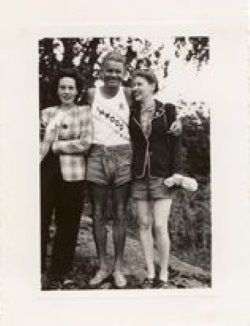
Eddie lived with his parents and from the age of 17, was employed as a pressman at The New York Times. As a skiing and canoeing enthusiast, he took many skiing vacations and was a frequent visitor to the Thousand Islands. At one time, he was a member of the United States Olympic canoe team. He was a member of the Inwood Canoe Club, established in 1902, the oldest canoe and kayak club in Manhattan. He was also a pleasure boat and sailing enthusiast, and was a member of the Harlem Yacht Club, one of the oldest yacht clubs in the United States.
From Jack Patterson's memories:
Our grandparents purchased the island next to Sugar Island in the 1920’s. I was raised there during the summers. I used to spend a lot of time on Sugar and have many memories of what for me was a formative time. McEvoy became a friend to my grandmother and great grandmother, really to all of us, and over the winter would leave notes in our mailbox.
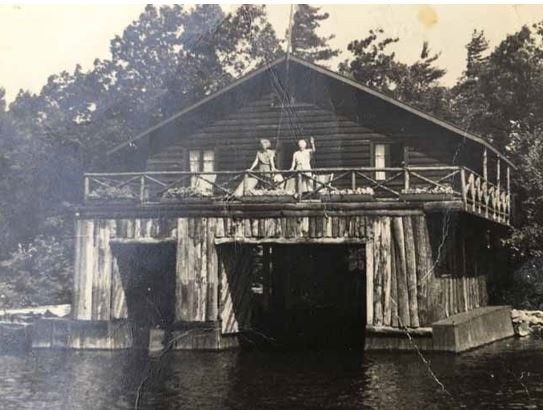
We went over to Sugar Island often, especially once the American Canoe Association (ACA) annual “Meet” began. As far as I know, the two-week “meet” was pretty much the same as it had been since the earliest days of the association. Two weeks for working people was all the time available; and the middle two weeks of the summer seemed ideal.
All of our family would be sitting on our dining porch facing Sugar and annually counting the tents and active camps. We looked forward to seeing lots of folks there, especially during the two-week meet. Joining the campfires nightly . . . there would be games, singing, and storytelling . . .
Morning would arrive, and Dave Fishman would call out across the water, “Oyea, Oyea McEvoy,” a personal greeting to his friend camped on one of the bays on Sugar Island. It was a call we could clearly hear over on Axeman Island, even though it came from the north side of Sugar.
Our grandmother tells of her first meeting with Mr. McEvoy, who apparently paddled all the way from Yonkers, NY, to the island, one year in the thirties. Perhaps it was earlier, but regardless, she shared her memory of that trip. She was washing vegetables off the upper dock, and suddenly there appeared this youngish man in a loaded canoe, who, before she could say “Good Morning!” says to her in a strong Bronx accent, “All the way from Yonkers in thirteen days!” My friend Marilyn Vogel, another Sugar Islander, told me she didn't doubt that McEvoy paddled up the Hudson.
The question remains: was it possible that Eddie McEvoy arrived at Sugar Island from Yonkers, NY, taking 13 days, traveling in his canoe?
Winter 1951
Eddie had been a summer and winter visitor to Gananoque for many years, often spending part of his winter holidays at the Sugar Island Camp of the ACA. It wasn't unusual for him to be here in February, since the island was available for year-round use. He was heading for Sugar Island in 1951, when he set out from Gananoque on skis to cross the ice. This time, he didn't make it back.
Eddie's pack sack containing food, a blanket, and a hatchet were found in a building near the camp. Cards were also found, two on Sugar Island, one on Little Stave Island. They were made from cigarette packages with Eddie's name and the handwritten inscription “Inwood Canoe Club, February 22, 1951.” It was concluded that he had left the cards to prove to fellow club members that he had visited the island on that date. On a bench, a knife and fork were set out as though he intended to return in a few minutes to eat.
Twelve days after Eddie had gone missing, a ski pole was found projecting from an air hole some three hundred yards off the foot of Sugar Island. Planes, punts, and ice boats were used to cover the Sugar Island area and although no additional developments were reported, McEvoy's camera was found on the island. Recovery efforts proceeded, with aerial searches and dragging operations in the channel between Sugar and Axeman Islands, where it is believed Eddie went through the ice.
Gordon Dowsley Memories:
Gordon Dowsley shared his memories in his amazing record: Paddling 1953 – 1964.
The night before the big regatta on the second Saturday in August 1953 there was a terrible thunderstorm with portends of strange happenings. The morning sun dried everything off and excitement was mounting for the annual regatta. In town, my grandfather rented the water taxi to take us down to Sugar. Everyone was in a state of anticipation when word flashed like lightening that McEvoy had shown up.
Isobel Wakefield (Oppen), a teenager at the time, was out water skiing and couldn't believe what she thought she saw. So she signaled for the boat to go around again and then headed in to tell her father, Dr. Wakefield, who by chance was the officer of the day, that a body was floating in.
At about the same time, Bill “Dusty” Rhodes was out with his Washington four boat to limber up, and there beside them was their old friend, McEvoy.
Some of the men put the body in an old punt and threw a tarp over him. I heard one man at the island headquarters say he had identified the body by the belt buckle, a big M. Then a shout went out that they were bringing the punt into the main dock in the bay. Everyone just turned and ran to the dock. In the excitement no one told the kids to stay away and I always remember peeking through the legs of the adults and seeing the right foot in a ski boot stuck out from under the tarp, and the terrible smell . . . he completely dominated the attention of the encampment that year and for several years after, as his story was told again and again. How could he have shown up on that day, the big day of the season? How did he show up at the island? It is a wonderful story.
Eddie McEvoy was buried the same day in Gananoque. Not too many days later, Edward McEvoy Sr. sent a telegram requesting that his son’s remains be shipped to the Lennox Funeral Home in New York. Eddie McEvoy’s final resting place is the Cemetery of the Gate of Heaven, Mount Pleasant, Westchester County, NY.
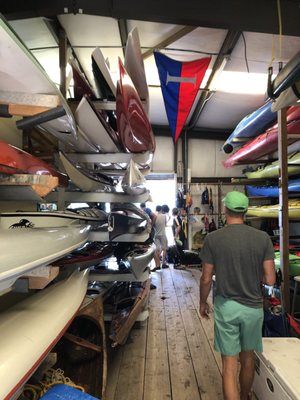
The sudden, untimely passing of Eddie McEvoy of Sugar Island and the Washington and Inwood Canoe Clubs left many heavy hearts amongst us. The following tribute, expressed so well by his friend Dusty Rhodes of the Washington Canoe Club, perhaps best reflects the feelings of all who knew Mac.
“FAREWELL MCEVOY”
Edward Quirk McEvoy was my friend. He always made me welcome at his camp. He has been my companion on long cruises. He was my sturdy competitor in many races. He has often shared a “pot of tea” with me – which was an honor.
When I first visited Sugar Island, “Mac” helped me feel at home. He was one of the planners of a cruise to Alexandria Bay, upon which we joined forces with paddlers from Pendleton C.C. Mac showed us how to gain “Free” admission to the Boldt Castle. He showed me where he had inscribed his name in various, almost inaccessible places. He took a child-like delight in doing such stunts, and in this way, he never grew old.
Mac loved distances and lonely places. His play consisted largely of lengthy cruises over the St. Lawrence expanses during the summer and of skiing and ice-skating over the same area in the winter time. And although he was equally at home on any of America's waterways, he adopted the Thousand Islands and the St. Lawrence as his very own, and he made Sugar Island his headquarters.
However contented he was to hike or cruise alone, companions were always welcomed. For Mac loved people. One of his chief delights was to join the nightly campfire gathering at Headquarters, where singing and laughter were at their height.
Beloved by Canadians and his own countrymen alike, Mac will be chiefly mourned by the racing paddlers – the small group who symbolize best Mac's idea of sportsmanship. For Mac, in seeking medals and “mugs” (of which he accumulated many), joined a game of meager worldly reward, but one great in the spiritual gain of “striving”. It has been said, and truthfully, I am sure, that Mac has won more third place awards than any other North American paddler – his tenacity has shown (like that of other great men) that the prize was not the important thing – but the struggle.
So now my friend Eddie McEvoy is with us no more. Never again will we hear the familiar hail of his friends on Buck Point - “Oyea, oyea – McEvoy!” But it is indeed fitting that he should have made his mortal exit via such a glorious gateway – the St Lawrence, which he loved so well . . .
Oyea, Oyea, McEvoy . . . we haven't forgotten you!
By Jack Patterson, with the help of Karen Wand, Gordon Dowsley, and the Inwood Canoe Club.
John F. Patterson, or Jack, is a long time island resident on Axeman in the Lake Fleet Group. He has spent almost every summer on Axeman since 1938. He is a proud outdoorsman, having hiked the Appalachian Trail in 2002, from beginning to end. He has also hiked substantial portions of the Pacific Crest Trail, from the Mexican border to Lake Tahoe, and further sections to the Columbia River.
Gordon Dowsley, a Gananoque native, and now a resident of Oshawa, ON, published a fascinating memoir of the Gananoque Canoe Club called "Paddling 1953 -1964." It was written on the occasion of the Canoe Club's 100th anniversary in 2006. The story of Eddie McEvoy's "return" is part of that narrative. Gordon and his wife Marilyn return to Thousand Islands to summer on Corn Island.
Karen Wand and her late husband, Rick, lived on the West Coast for many years before returning to the Thousand Islands to be near her family. Karen captured a detailed story of Rick's great uncle, the talented local boat builder, Jack Malette, in April 2013. Her appreciation of unsung heroes comes through in her writings.
[Editor's Note: When I first received Jack Patterson's (Axeman Island) article from Karen Wand, I knew it was too long, but the more I read through it, the more I wanted to capture everything. Sugar Island is known by many - and getting this story recorded in TI Life is a perfect idea!]
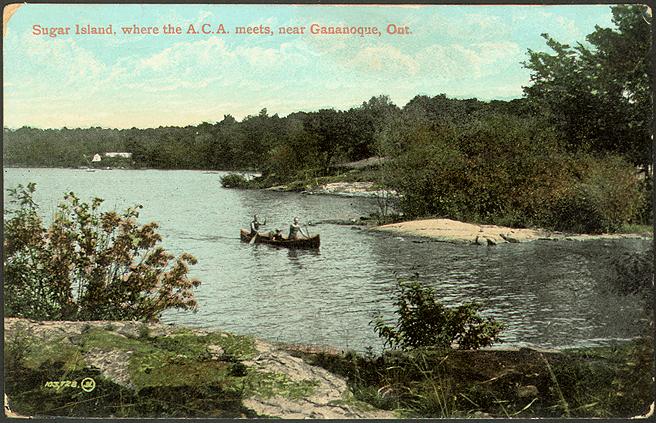
Posted in: Volume 18, Issue 9, September 2023, History, People, Places
Please click here if you are unable to post your comment.
